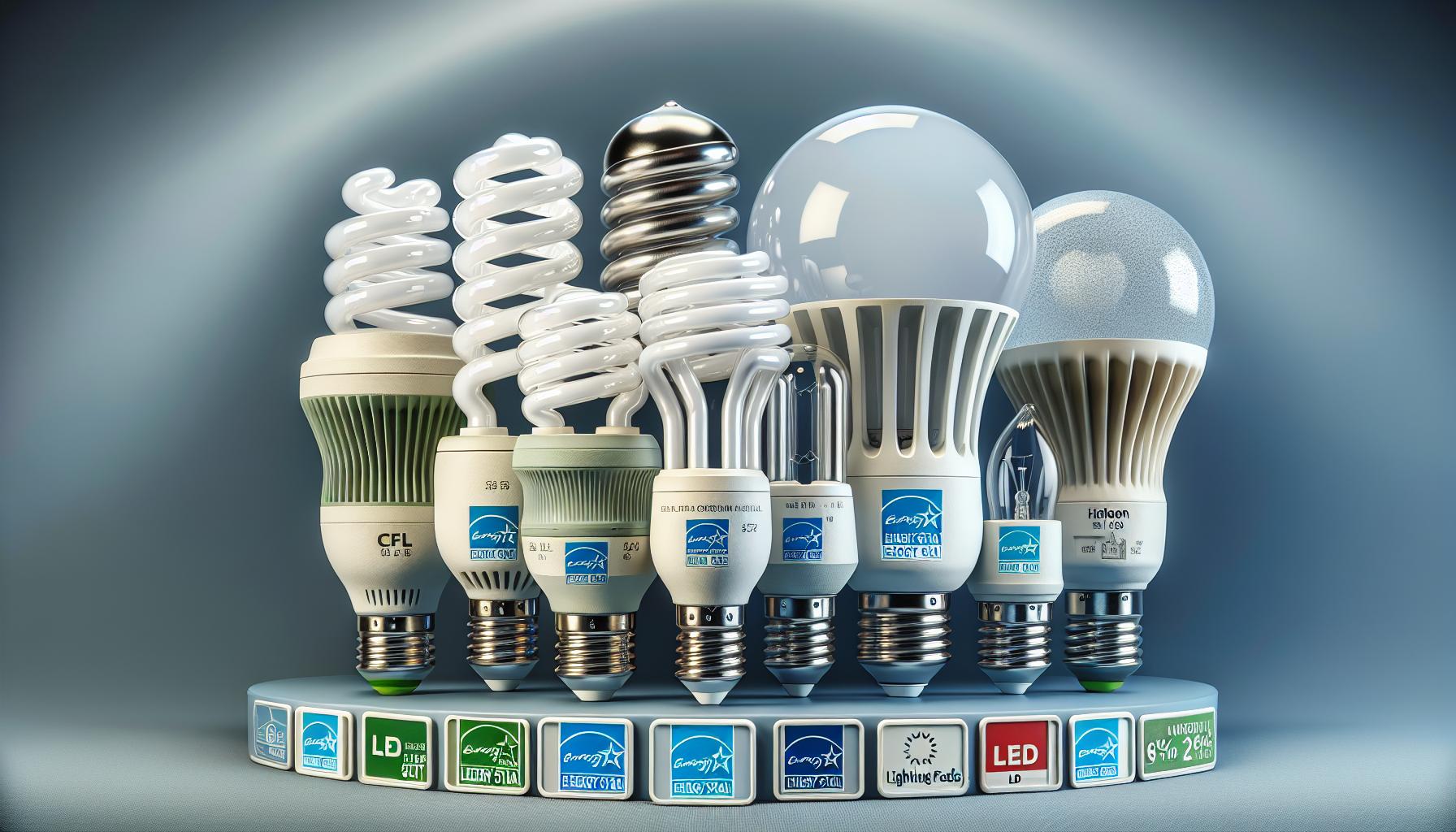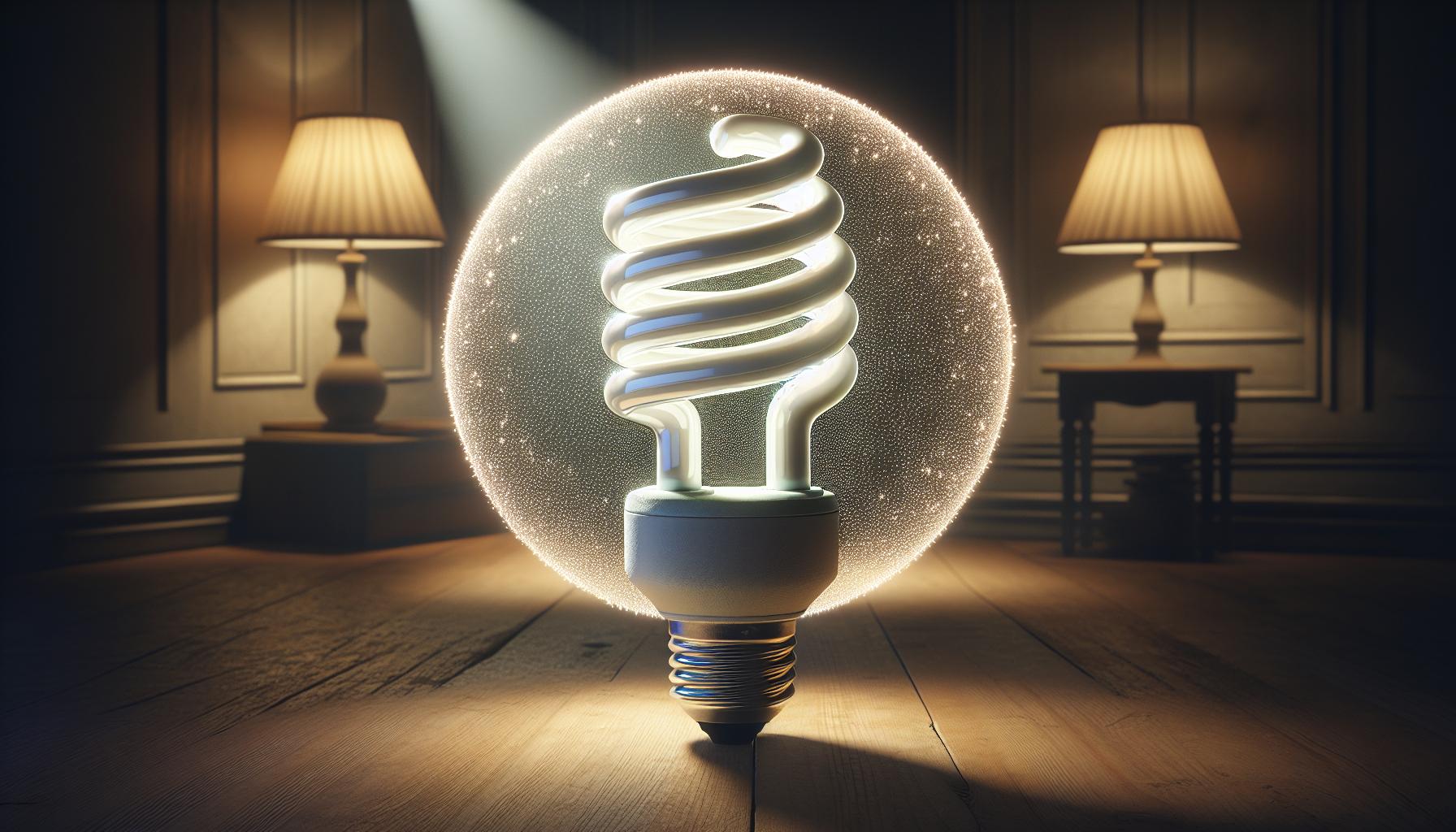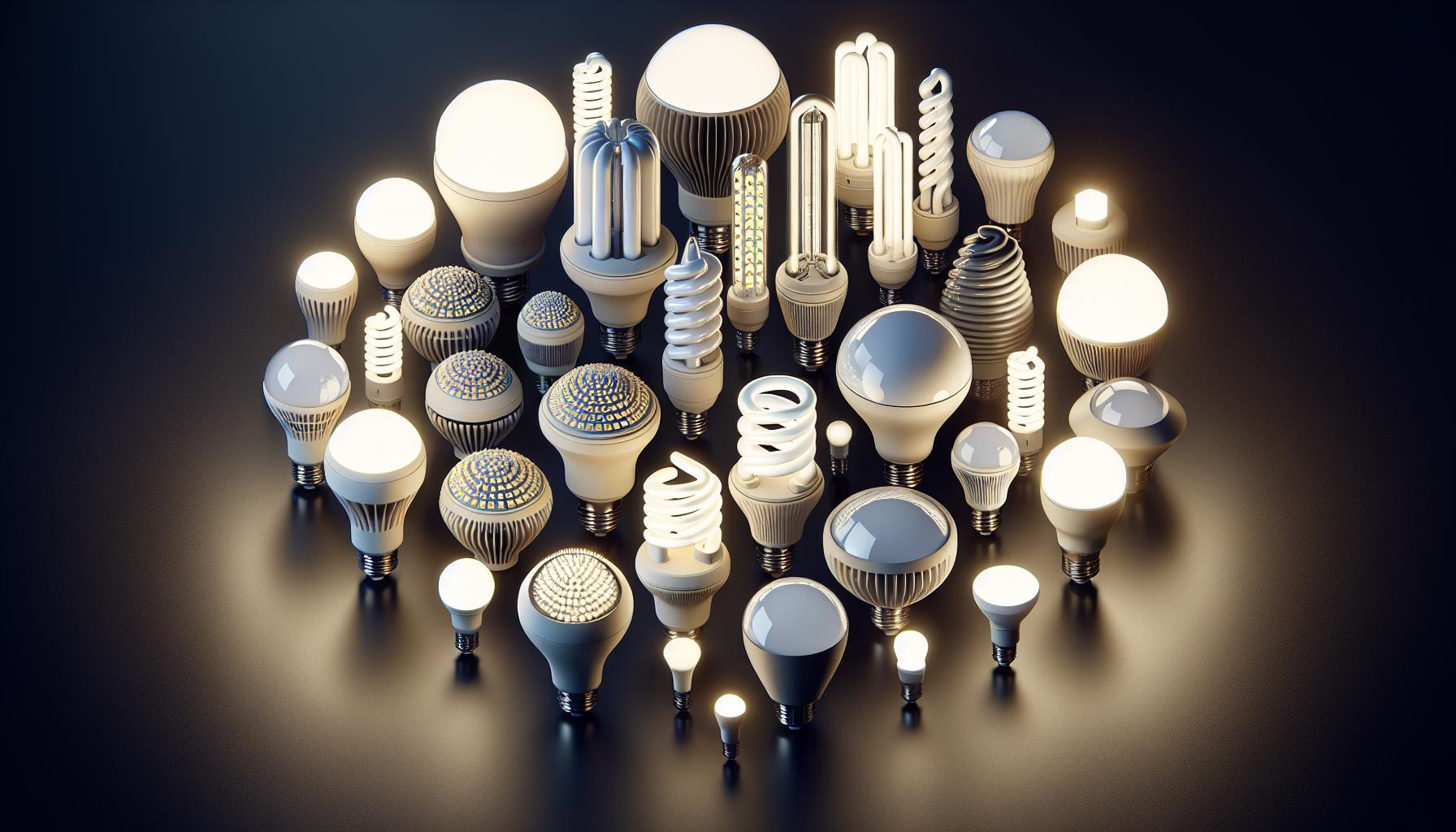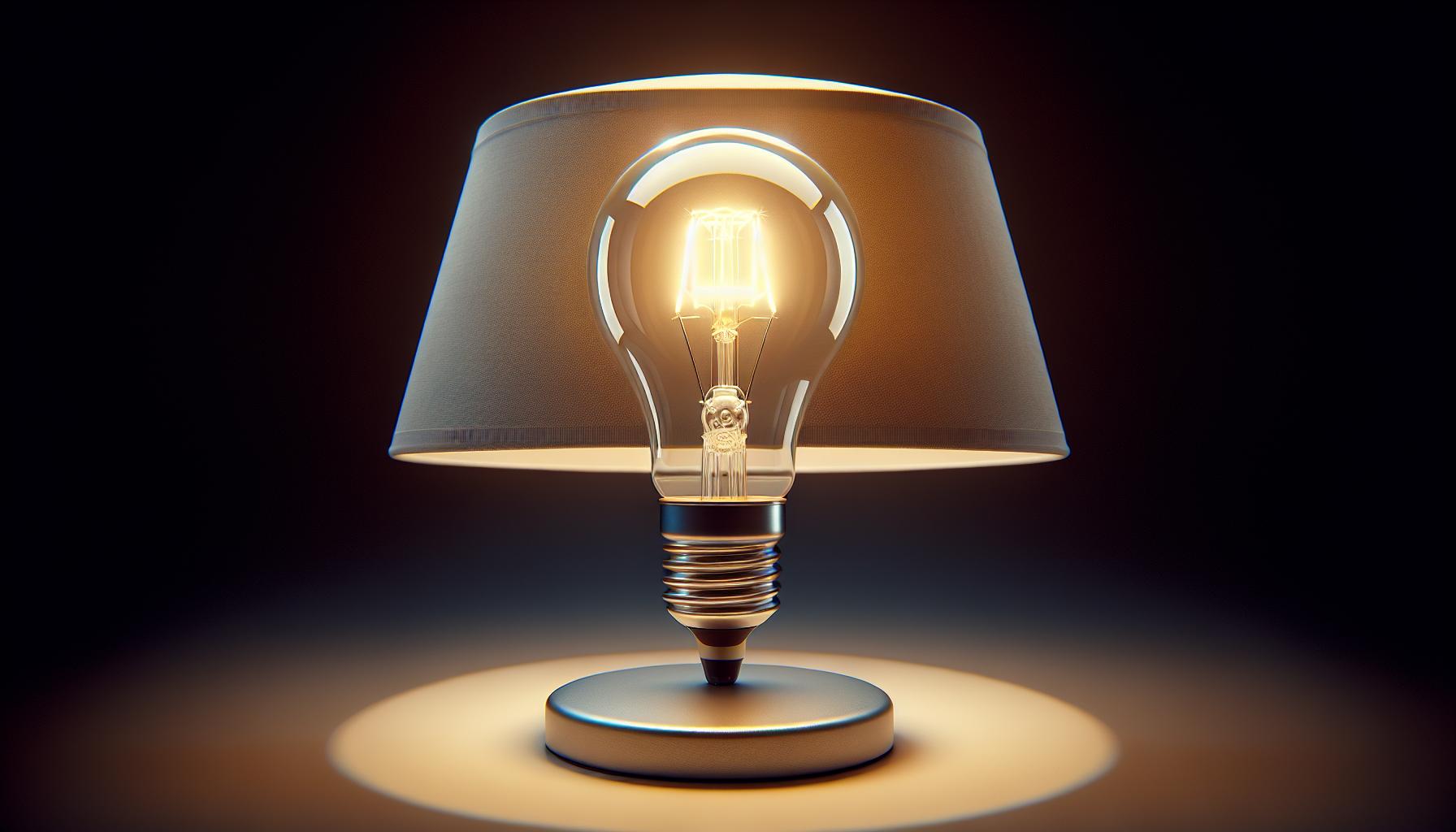Ever wondered why your electricity bill spikes every time you leave the lights on a bit too long? It could be down to the type of bulbs you’re using. Not all light bulbs are created equal, especially when it comes to energy efficiency.
In the quest for a greener planet and lower energy bills, it’s crucial to pick the right bulb. You’ll want to know which ones give you the most bang for your buck without skimping on brightness or longevity.
Let’s shed some light on the most energy-efficient bulbs out there. It’s time to illuminate your space smarter, not harder. And who knows? You might just find that swapping out your bulbs is the bright idea that saves you money in the long run.
Different types of light bulbs
When you’re on the hunt for the most energy-efficient light bulbs, you’ll come across a few key types. Incandescent bulbs, the traditional ones you might have grown up with, are on their way out. They’re energy hogs, converting more electricity into heat than light. Frankly, they’re not your friend when it comes to saving energy.
Next up, halogen bulbs, a type of incandescent that’s slightly more efficient but still not the best choice for your energy bill. They produce a bright, white light and are often used in spotlights or floodlights. While they’re better than their older cousins, there’s still room for improvement.
Let’s talk compact fluorescent lamps (CFLs). These curly wonders use about 70% less energy than incandescents and last much longer. If you’ve ever felt the frustration of constantly changing light bulbs, you’ll appreciate their longevity. Just remember to handle with care – they contain small amounts of mercury.
The real game changers, though, are the light-emitting diode bulbs (LEDs). They might cost more upfront, but they shoot to the top with their efficiency and lifespan, outperforming every other type by leaps and bounds. They’re your trusty companions for both indoor and outdoor lighting needs.
| Light Bulb Type | Efficiency | Lifespan (hours) |
|---|---|---|
| Incandescent | Low | 1,000 |
| Halogen | Medium | 1,000 – 3,000 |
| CFL | High | 8,000 – 15,000 |
| LED | Very High | 25,000 – 50,000 |
Diving into the specs, it’s clear LEDs are the champions in the long run. They offer a stunning range of colors, dimming capabilities, and are even smart home ready. With these bulbs, your DIY projects will not only look better but will also be kinder to your wallet. Whether you’re brightening up a cozy reading nook or adding pizzazz to your kitchen, LEDs are versatile enough to suit every corner of your home.
Understanding energy efficiency ratings
When you’re browsing the lighting aisle, energy efficiency ratings are like a roadmap to the best choices for your home. Think of them as a cheat sheet to saving energy and, in the long run, your hard-earned money. So, here’s what you need to know.
Energy Star is the trusted emblem you’ll want to look for. Products bearing this symbol meet strict guidelines set by the US Environmental Protection Agency. Energy Star-labeled bulbs use 70-90% less energy than traditional incandescent ones. Seeing this seal on a light bulb package is your green light that it’s a top energy performer.
Then there’s the lumens-to-watt ratio—this is a key indicator of a bulb’s efficiency. Lumens measure brightness while watts gauge energy consumption. Higher lumens with lower watts? That’s your jackpot. It means you’re getting more light with less power. Aim for bulbs that give you the most lumens per watt for the most savings.
Check out the Lighting Facts Label on the packaging. It’s your quick reference card for vital stats like lumens, wattage, and the estimated annual operating cost. And here’s a tip—don’t just glance at it; use it to compare different bulbs right there in the aisle.
To make your DIY lighting projects shine, let’s break down the numbers in an easy-to-digest table comparing traditional incandescent bulbs and their energy-efficient counterparts:
| Bulb Type | Lifespan (hours) | Energy Use (watts) |
|---|---|---|
| Incandescent | 1,000 | 60 |
| Halogen | 1,000-3,000 | 45 |
| CFL | 8,000-10,000 | 14 |
| LED | 25,000-50,000 | 10 |
« What Are Red Light Bulbs Used For? Discover 5 Surprising Uses
Why Light Bulbs Explode: Avoid Shattering Surprises »
Bulbs with higher wattages don’t necessarily produce brighter light—they just consume more energy. So, when you’re working on that perfect ambient lighting for your cozy reading nook or getting the task lighting just right in your kitchen, prioritize those LED options. They might have a higher initial cost, but they’ll keep your electric bill down and shine bright for years before they need replacing.
Compact fluorescent bulbs (CFLs)
As you continue your quest for the perfect energy-saving light bulb, let’s shine a spotlight on Compact Fluorescent Bulbs (CFLs). You’ve probably seen these spiral-shaped bulbs that give off a soft, flattering light. If your lighting project aims to combine efficiency with cost-effectiveness, CFLs might just hit the sweet spot.
Known for their distinctive curly shape, CFLs are a modern twist on the traditional fluorescent tube lighting. They work by driving an electric current through a tube containing argon and a small amount of mercury vapor. This generates invisible ultraviolet light that excites a fluorescent coating inside the tube, producing visible light. It’s like a little light party, and you’re invited each time you flick that switch!
CFLs are juggernauts when it comes to saving energy, using about 70% less electricity than their incandescent relatives. Not only do they consume less power, but they also have a respectable lifespan. Let’s look at some numbers:
| Bulb Type | Average Lifespan | Energy Used |
|---|---|---|
| CFLs | 8,000 Hours | Moderate |
| Incandescent | 1,000 Hours | High |
These figures show that CFLs last considerably longer than incandescents, although not quite as long as LEDs. When it comes to dimmable options, CFLs have come a long way. Historically, dimming was a challenge, but many modern CFL bulbs offer compatible solutions with appropriate dimmer switches. Remember, to get the most out of your CFLs, they must be matched with the right fixtures and conditions. Also, because they contain a trace amount of mercury, proper disposal is key – your local waste management facility can guide you on how to responsibly recycle your used CFLs.
Light-emitting diode bulbs (LEDs)
When you’re diving into the world of energy-efficient lighting, LEDs are a true game-changer. These marvels stand out for their incredibly low energy consumption and exceptional lifespan. Unlike CFLs, LED bulbs don’t contain mercury, making them an eco-friendlier option right off the bat.
Here’s why you’ll love LED bulbs for your DIY lighting projects:
- They’re versatile—LEDs come in various shapes and sizes, perfect for crafting that custom look in your space.
- They shine bright immediately, so there’s no warm-up time needed.
- They’re durable; they can take a bump or shake without breaking.
Let’s talk numbers. LEDs use about 80-90% less energy than traditional incandescent bulbs, and they can last up to 25 times longer. It’s worth noting that the upfront cost might be higher, but they’ll save you a bundle in the long run. Check out the specifics in the table below:
| Bulb Type | Average Lifespan (Hours) | Energy Use (Watts) |
|---|---|---|
| LEDs | 25,000-50,000 | 4-10 |
| Incandescent | 750-2,000 | 40-60 |
You’ll also find that LEDs have advanced in terms of functionality and design. Dimmable options are readily available, allowing you to set the ambiance just right for any occasion. Plus, with the wide range of color temperatures and colors, you can customize your lighting to fit your mood or the task at hand.
Lastly, let’s not forget that LEDs are champions of heat management. They stay cool, reducing the risk of overheating and making them ideal for long hours of operation—perfect for those intricate projects you spend evenings working on. The bottom line? LEDs have transformed the lighting landscape, ensuring your DIY projects not only look good but are energy efficient too.
Remember, proper lighting is everything when you’re meticulous about detail, and LEDs deliver it with remarkable efficiency and flexibility. Keep on shining with LEDs, they’re lighting the way to a brighter, more sustainable future.
Halogen incandescent bulbs
Halogen incandescent bulbs, your traditional choice with a twist, strike a balance between the classic feel of incandescent lighting and the need for energy efficiency. Unlike standard incandescents, these bulbs have a capsule inside that holds halogen gas, which increases bulb efficiency.
What’s notable about halogen incandescents? They’re more energy-efficient than traditional incandescents. Here’s how they stack up:
- Energy Savings: Your typical halogen incandescent bulb saves about 25% more energy compared to older incandescent models.
- Lifespan: Expect these bulbs to last on average up to three times longer.
Despite not being as efficient as LEDs or CFLs, halogen incandescents have their own perks.
- Dimmable: Like their predecessors, they work wonderfully with dimmer switches. This means you get total control over the ambiance in your space.
- Quality of Light: They output a light that’s similar to natural daylight, making them great for tasks requiring attention to detail.
- Instant On: No waiting around; they reach full brightness as soon as you flip the switch.
Consider the following when shopping for halogen incandescent bulbs:
- Heat: They run hotter than LEDs or CFLs, so they might not be the best choice for fixtures that are tough to ventilate.
- Cost Over Time: They’re cheaper upfront than LEDs but you’ll be replacing them more often.
- Color Rendering Index (CRI): Halogen bulbs usually have a higher CRI, indicating colors under this light closely match their appearance under natural daylight.
For your DIY lighting projects, halogen incandescent bulbs offer a simple swap from traditional incandescents while providing a touch of energy savings. They can be the ideal solution when you’re looking for the golden glow of incandescent lighting with a bit of efficiency thrown into the mix. Whether it’s the warmth and familiarity of the light or the instant brightness, these bulbs hold their ground in specific uses around your home.
Conclusion
You’ve got a handle on the variety of energy-efficient bulbs out there and halogen incandescents might just be the right fit for your needs. They strike a balance between cost and efficiency and could be the perfect way to transition into a greener lifestyle. Remember though they’re not as cool-running or long-lasting as their LED or CFL counterparts. As you make your choice weigh the pros and cons and pick the bulb that not only saves energy but also fits your space and style. Happy lighting!
Frequently Asked Questions
What are halogen incandescent bulbs?
Halogen incandescent bulbs are a type of light bulb that are more energy-efficient and have a longer lifespan than traditional incandescent bulbs. They produce light that is similar to natural daylight and are dimmable.
Do halogen incandescent bulbs save energy compared to traditional incandescent bulbs?
Yes, halogen incandescent bulbs are more energy-efficient compared to traditional incandescent bulbs. This means they can save energy and potentially reduce electricity costs.
Are halogen incandescent bulbs a good alternative to traditional incandescent lighting?
Halogen incandescent bulbs are a good alternative if you’re looking for a simple swap from traditional incandescent bulbs with some energy savings and a similar quality of light.
Can halogen incandescent bulbs be used in any light fixture?
While halogen incandescent bulbs can be used in most fixtures, they may not be suitable for fixtures that are difficult to ventilate due to the heat they generate.
How do the costs of halogen incandescent bulbs compare to other energy-efficient light bulbs?
Halogen incandescent bulbs are more affordable upfront compared to some other energy-efficient light bulbs like LEDs but will need to be replaced more frequently, leading to higher long-term costs.





